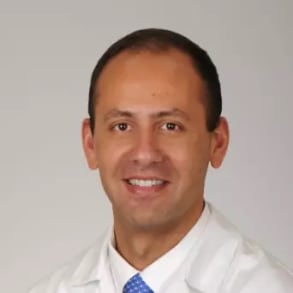Surgeons at MUSC recently partnered with Transmedics to perform the first DCD heart transplant in South Carolina, using an ex vivo perfusion machine to transport and evaluate the donor organ before successfully transplanting it into a patient with end-stage heart failure. Arman Kilic, M.D. , surgical director of the MUSC Heart Failure and Heart Transplant Program, describes the advantages of this technology, including enhanced access to donor organs for patients in need.
the transmitting device is a ex vivo machine perfusion device. So it's actually a device and piece of technology that allows us to remove a heart from a donor, place it on the device and that device is able to provide perfusion and oxygen delivery to the organ while it's being transported. And also allows us to provide diagnostic assessment of the organ and its quality and suitability for transplantation. Heart transplants traditionally have been performed with donors after brain death. And what that means is these are donors that have irreversible neurologic failure. So they have coma, they have absence of brainstem reflexes and they have no self respiration donation after circulatory death, donors or DCD donors or those that do not meet criteria for brain death, but they do have their dependent on life sustaining therapies. And what the trans Matic system allows is for us to utilize DCD donors. But it also allows us to access brain dead donors that have high risk criteria. For example, donors that are located at distances very far away, where we would be concerned about the amount of time that heart would be outside of the body. This system actually allows us to go and retrieve those organs, place it on this machine, which provides blood flow and circulation to that organ until it could arrive at our center here for us to transplant. So typically when we do a traditional brain dead donor and we're going to utilize that for heart transplantation. We want. What's known as the cold ischemic time, which is really the amount of time that the hearts out of the body. We want to limit that to less than four hours. And the reason for that is that ischemic time has been shown repeatedly to correlate very very strongly with with rates of primary graft dysfunction and outcomes of the recipient for donation after cardiac death. There's a couple of different components that go into that one is the warm ischemic time. So that's separate and that that basically there's different definitions of it. But it basically relates to once there's withdrawal of life sustaining therapy from the donor, They will hit a certain trigger. And that's either hypertension. So if their systolic blood pressure hits 80 or 50 depending on how centers define it. And there's some variability there or if their oxygen saturation dips below 70% the clock starts at that point. And then typically what you want to do is limit the warm ischemic time to less than 30 minutes in terms of distance. And this applies to brain dead donors as well that are utilizing the transmitting system. The nice part about that technology is because your perf using them on a machine, you can really, it's almost limitless. There hasn't been a lot of data that's correlated amount of time spent on the machine with outcomes. But we know of many centers for example anecdotally that have traveled across the country. So centers in that have gone to florida and so forth. Put the donor on the trans medics ex vivo system and then transplanted those patients successful one of the benefits of the transmitted ex vivo system. It allows you to have a diagnostic assessment of the organ while it's on the system, probably the most important measurement is the terminal lactate. So there's arterial and venous lactate that are drawn off the system. And what we're looking for is both the trend and the lactate. So we want to see a down trending but also the absolute value. And ideally we want that last lactate to be less than five for us to proceed with transplantation. So this was a patient that had end stage heart failure and actually had a pretty large burden of ventricular tachycardia which can be a fatal cardiac arrhythmia. Um He had undergone a couple a blade of procedures in the past but remained really in persistent and stage heart failure. Um We were able to support him with a temporary mechanical circulatory support device. Get him listed for a transplant because of his size and blood type. We knew that it was gonna be a little bit of a challenge in terms of getting him a donor organ quickly. Um And a dcD donor became available. We accepted it. Um and we were able to transplant with one thing we noticed was that once we removed the aortic cross clamp from the recipient. After the donor was sewn in the heart restarted and had a sinus rhythm in the one teens probably within a few seconds and really had excellent function. And we were able to come off the cardiopulmonary bypass machine with really hyper dynamic by ventricular function. So really really excellent graft function. So the recipient did very well. He was actually our earliest discharge following a heart transplant. He's been seen during follow up as an outpatient is doing very very well. I think that this the transmitting system is going to allow us to expand the access our patients have who are on a wait list for a heart transplantation, their access to an increased number of donors. So I'm hopeful here at our program at M. U. S. C. That will be able to add at least 10 or more and eventually probably greater numbers to our overall number of heart transplants due to this technology.
Related Presenters
